









Welcome to the pages of Golden Stars, the magazine of Golden Star Ferries, the ferry company that takes you comfortably, quickly and safely to the most beautiful islands of the Cyclades. We hope it will keep you good company while you sail with us to your favourite island.
In keeping with the company’s philosophy of constantly improving its services to the travelling public, our magazine has been renewed and enriched to give you... a taste of what awaits you at your destination: beautiful villages, interesting people, enchanting beaches, unique events, as well as interviews with celebrities and current affairs personalities.
We believe that this is another step in our course to better support our passengers with high quality services. Since 2011, when Golden Star Ferries began operating in the coastal shipping industry, the company’s primary objective has been to serve and transport passengers and their vehicles with safety, comfort and consistency. The goal remains the same today, transporting over 2,000,000 passengers and vehicles a year from Rafina to Andros, Tinos, Mykonos, Paros, Ios and Santorini -and back.
With the ultra-modern, luxurious and fast ships of our fleet, a trip to the Cyclades will be a unique experience, the ideal start to your holiday. Golden Star Ferries has all sorts of services on board to make your journey even more enjoyable, such as shops for your purchases and of course WiFi so you can share the moments of your journey with your friends at all times!
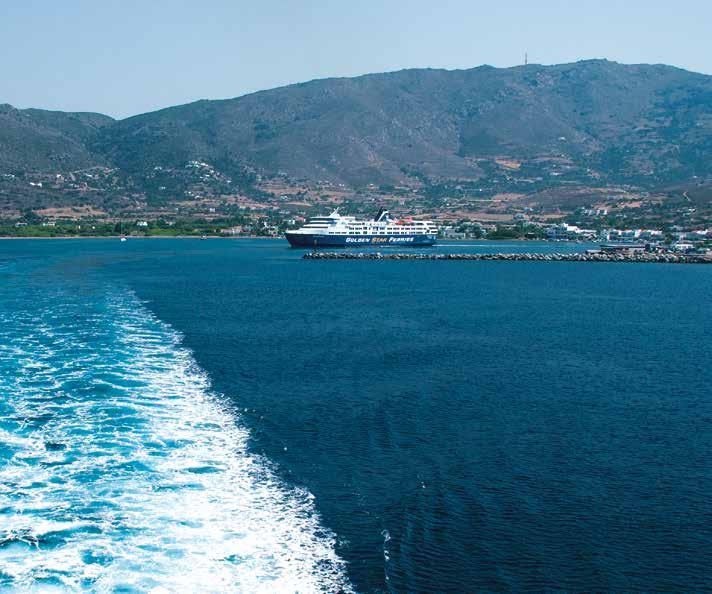
νουν
Finally, we would like to remind you of Golden Star Ferries’ special loyalty programme for its regular passengers, Golden Miles: earn miles from your travels and enjoy privileges and discounts with our dynamically growing network of partners -airlines, car rental companies, credit cards, hotels and shops! You can find details of the programme in the magazine or online.
Finally, Golden Star Ferries is pleased to announce the purchase of the F/B VOLCAN DE TABURIENTE. Our new acquisition will be launched as one of the newest and most modern ships in the Greek seas and will mark the beginning of a new phase of development to make Golden Star Ferries a benchmark in Greek coastal shipping. At the same time, it will contribute to the further development of the island region in which it will operate, improving transport needs and services for local communities.
We would like to thank you for being with us on our journey through the Greek seas and we promise you that we will continue our journey with the same values, ethics and respect for our passengers, so that you can be sure that the ships with the golden star are the best choice for travellers!













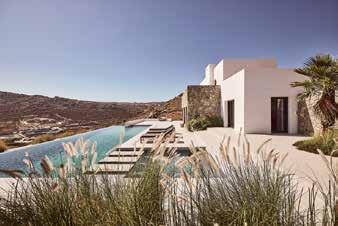







Offices:
Athens: 13-15 Sofokleous Rd, Athens
w w w . r e v i t h i s - r e a l e s t a t e . c o m
D r o s i a : 2 M a r a t h o n o s S t r .
w w w . r e v i t h i s . c o m
Mykonos: New Region Drafaki Rd, (Above Piraeus Bank)
w w w m y k o n o s - r e a l e s t a t e c o m
Arachova: Old Nation Rd
www.parnassos-realestate.com
Vouliagmeni: Astir Marina Vouliagmenis, South Suburbs
w w w . g r e e k t o p v i l l a s . c o m
















“Spilia” means “Cave”.










Παραγωγή – Έκδοση PMS MEDIA
Κηφισίας 312, 152 32, Χαλάνδρι, Αθήνα Τηλ: 210 3212037 info@pmsmedia.gr Διευθύντρια: Ξανθή
Creative Director: Nίκος
Art Director: Αλέξανδρος
Golden Star Ferries Shipping Company
Φίλωνος 133, Πειραιάς Τηλ.: 212 2224000, www.goldenstarferries.gr
Production – Publishing PMS MEDIA
312 Kifisias Ave., 152 32, Chalandri, Athens Τel.: +30 210 3212037 info@pmsmedia.gr
Managing Director: Xanthi Iliopoulou
Managing Editor: Thanassis Toloudis
Creative Director: Nikos Vatsitsis
Art Director: Alexandros Bitsaras
Contributors: Eva Angelopoulou, Maria Atmatzidou, Dimitris Papadopoulos, Ζoe Papadopoulou
Copy Editor: Niki Stathia
Translation: Evita Lykou
Photos: Andreas Simopoulos
Commercial Director: Stavros Kefalopoulos
Advertising Managers: Giorgos Andreadelis, Lena Konitsa, Kaiti Konitsa, Marifili Papanikolaou, Stella Selianiti, Peggy Stebili
Printing: PaperGraph S.A.
Your Free Copy
It is illegal to publish, reproduce, or transmit in whole or part of the magazine without the written permission of the publisher. The GOLDEN STAR FERRIES isn’t responsible for the contributors’ opinions as they are represented on issues.
Golden Star Ferries Shipping Company
133, Filonos Str., Piraeus Τel.: +30 212 2224000, www.goldenstarferries.gr





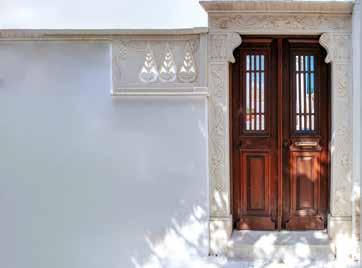
Through the lens
Pilgrimage by the sea
A hug for the strays 38
Tracing the 3rd millennium B.C.
The village of marble

Woman-scented myths






Dimitris Lalos
The
Danae Michalaki

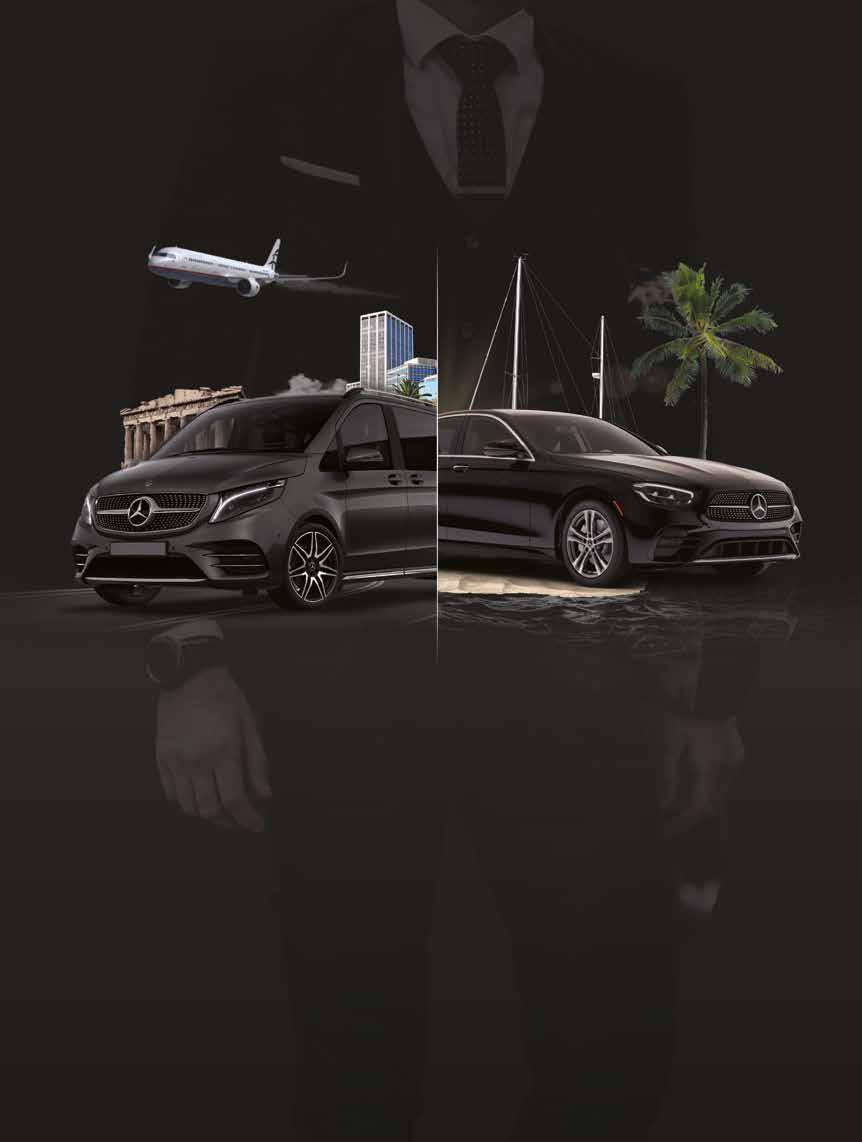



THE BASIL & ELISE GOULANDRIS FOUNDATION IS ORGANISING A VERY INTERESTING RETROSPECTIVE EXHIBITION OF THE FAMOUS PHOTOGRAPHER MARTINE FRANCK AT THE MUSEUM OF CONTEMPORARY ART IN ANDROS, ENTITLED “LOOKING AT OTHERS”.

© Martine Franck/Magnum Photos H “Children’s Library”, Clamart, France, 1965.
© Martine Franck/Magnum Photos
Idon’t think you can be a good photographer without being curious about others”. These are the words of the British-Belgian photographer Martine Franck; her curiosity about others, her attraction to people, was one of the key elements of her own character. It is precisely this attribute that formed the core of her work.
In the retrospective exhibition at the Museum of Contemporary Art in Andros, you will have the opportunity to get to know and follow the evolution of Martine Franck’s career, from her first steps in 1963 to her death in 2012.



«Ο τούλκου Khentrul Lodro Rabsel, 12 ετών, με τον πνευματικό του σύμβουλο Lhagyel», Μονή Ζεχέν, Μποντνάθ, Νεπάλ, 1996.
© Martine Franck/Magnum Photos
H “Tulku Khentrul Lodro Rabsel, 12 years old, with his tutor Lhagyel”, Shechen Monastery, Bodnath, Nepal, 1996. © Martine Franck/Magnum Photos

«Γηροκομείο», Ιβρί-σιρ-Σεν, Γαλλία, 1975. © Martine Franck/Magnum Photos H “Hospice”, Ivry-sur-Seine, France, 1975. © Martine Franck/Magnum Photos
Η Martine Franck
The desire of the photographer, who was the second wife of the equally famous Henri Cartier-Bresson, to understand people by seeing them through the lens, is reflected in the themes of her work.
Martine Franck has always used black and white film, and is known for her documentary style of photography. The exhibition also reflects an artist who was political and militant in her time. Through her “friendly gaze”, as her fellow photographer Robert Doisneau described it, Franck inspired trust and respect for those living on the margins of society: the elderly, the poor, the socially excluded.
Franck explored various worlds: the carelessness of childhood, the movement for women’s emancipation, the Buddhist temples of Tibet, the industrial north of England. She has also photographed important

«Πούρι», Ινδία, 1980.
© Martine Franck/Magnum Photos
H “Puri”, India, 1980.
© Martine Franck/Magnum Photos


View of the retrospective exhibition of works by Martine Franck “Looking at others”. © Chris Doulgeris
figures in the art world, such as the painter Marc Chagall, and in the world of letters, such as the philosopher Michel Foucault and the poet Seamus Heaney.
Henri Cartier-Bresson and his wife Martine Franck were dear friends of Basil and Elise Goulandris. Indeed, it is to Franck that we owe one of the most beautiful portraits of Elise Goulandris, photographed in Gstaad in December 1999, just six months before Elise’s death in July 2000.
The exhibition “Looking at Others” is divided into six sections that present in detail all the themes that have interested the photographer: the stages of life (childhood, initiation, old age), professional life (workforce, sea workers, public figures), political issues (protests, SaintBernard Church, consumerism), feminist struggles (key personalities, activist projects, collective action), spaces of representation and some of her “landscape thoughts”.
Guided tours of the Museum of Contemporary Art in Andros will be held in Greek and English from 1 to 31 August. At the same time, there will be educational programmes for children aged 5-12, and if you want to enjoy the exhibition as a family, you can take part in interactive family tours from 24 July to 25 August.
Chris Doulgeris
https://goulandris.gr/el/visit/ be-andros γραμμάτων,

This exhibition is part of the double photographic tribute to the unique artistic couple Henri Cartier-Bresson and Martine Franck that the Basil & Elise Goulandris Foundation is presenting in parallel at its two museums in Athens and Andros until 27 October 2024.


Νησιωτικό προσκύνημα ΤΑ
BY EVA ANGELOPOULOU
THE ISLANDS OF THE CYCLADES OFFER MORE THAN BEAUTIFUL BEACHES AND PICTURESQUE ALLEYS. EMBLEMATIC CHURCHES AND MONASTERIES WITH ICONS AND RELICS OF INCALCULABLE VALUE ALSO ATTRACT THOUSANDS OF VISITORS.
The church of Panagia Ekatontapiliani or Katapoliani, one of the most important early Christian monuments in Greece, dominates Parikia on Paros. Its name (“a hundred doors”) comes from its 99 visible doors, the 100th of which, according to tradition, will be revealed when the corresponding secret door in Hagia Sophia is opened.
The original church was built in the 4th century by Constantine the Great, who fulfilled a vow made by his mother, St Helen, when she went




to the Holy Land in search of the Holy Cross. After it was damaged, perhaps by fire, the Byzantine emperor Justinian commissioned Ignatius, a student of the master builder of Hagia Sophia in Constantinople, to rebuild it in the 6th century.
Today, visitors are dazzled by the sensation of the church’s dome, with eight windows opening at its base, allowing light to enter the church, and the holy icon of Panagia Ekatontapiliani, a work from the 17th century. The sculptures that decorate the church come from the ancient temple of Demeter, located in the port of Parikia. Inside the complex, in addition to the main church of the Virgin Mary, there are several chapels and the 4th century Baptistery, the oldest and best preserved in the Orthodox East.
Ekatontapiliani also houses the Byzantine Museum of Parikia, with rare icons, woodcarvings and other ecclesiastical relics from the Byzantine and Turkish Occupation periods.
(Our Lady of Tinos)
Panagia of Tinos is one of the most important destinations of religious interest in Greece. Every summer thousands of tourists visit the island to admire the holy church of the Virgin Mary and worship its famous icon. The church was built in the Chora of Tinos, on the very spot where



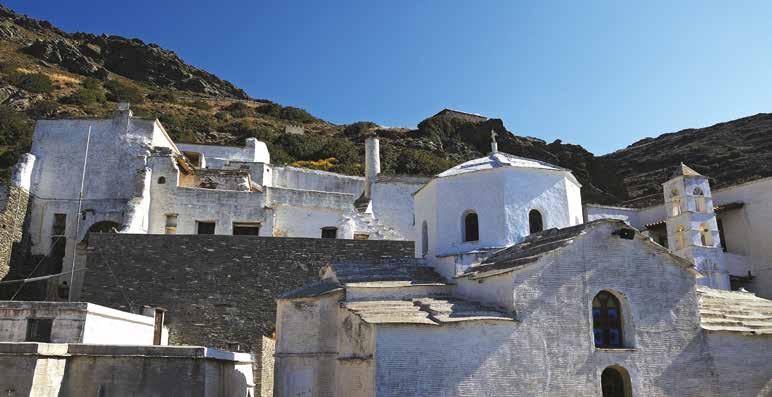
the icon of the Virgin Mary was discovered in 1823 after a vision of the nun Pelagia.
The church complex consists of the main church and annexes. The bell tower of the church, which dominates the sky and overlooks the island of Tinos, is also worth seeing. Next to the stairs leading to the temple is one of the most important votive offerings: the marble fountain, a gift from the Turkish Kiutahiji Mustafa Aga, who, after being paralysed, dedicated it to the Virgin Mary, asking her to heal him.
There are five museums within the complex that are well worth a visit. The Museum of Icons and Ecclesiastical Treasures stands out with sacred icons from many of Tinos’ churches, where you can see the first copy of the Holy Icon, as well as the Art Gallery and the Museum of Tinian Sculptures.
Of course, Our Lady of Tinos is celebrated on the 15th of August, the day of the Assumption of the Virgin Mary. The celebration lasts for eight days until 23 August.
Μοναστήρια Άνδρου
The island of Andros is considered one of the most important pilgrimage destinations in Greece, with monasteries dating back to Byzantine times, a rich religious history and excellent hagiographers.
Panachrantou Monastery: It is considered the most beautiful





SUPERMARKET | FRUITS & VEGETABLES | DELICATESSEN | WINES & SPIRITS
Welcome to a place where shopping becomes an artistic journey, offering a huge variety of quality products. Indulge in the stunning interior and treat yourself to a moment of respite at our elegant Bar, as our in-store DJ creates an immersive atmosphere.
H The Monastery of Agios Nikolaos in Andros.

Byzantine monastery of Andros. The miraculous icon of the Virgin Mary, the work of the Evangelist Luke, is kept there, as well as the skull of St Panteleimon, brought from Constantinople.
Monastery of Agios Nikolaos: The monastery is located in a wellpreserved, imposing complex surrounded by walls. Visitors will be impressed by the church’s carved wooden temple, while traces of frescoes have also been preserved. Many sacred relics are kept there, such as the skull of St Nicholas of Vounena, part of the skull of St Joseph of Arimathea and other sacred relics.
Monastery of Agia Marina: The monastery was founded in 1325 A.D. when an old ascetic had a vision of St Marina, who told him where to find her hidden icon in a crevice in the rock. The monastery was restored in 1975 and since then it is believed that St Marina has performed dozens of miracles.
Monastery of Agia Irini: Built in 1780 by two monk brothers. The stone church with its marble iconostasis and part of the walls surrounding the monastery are preserved to this day. The church houses the miraculous icon of St Helen and St Irene Chrysovalantou.
Monastery of Zoodochos Pigi: The largest monastery on Andros, known to the locals simply as the “Monastery of the Saint”. The monastery houses rare icons from the 14th and 16th centuries, a rich library of books and manuscripts, and a museum of sacred vessels and vestments.


TThe PAWS shelter is the only legally registered shelter for animals in Paros, and was established in March 2020 in Marathi, after intensive efforts by volunteers and with the support of sponsors. It is a high quality, modern and fully licensed shelter of approximately 10,000 m2 for stray pets.
Located in the mountainous part of Paros, the facilities are home to around 80 animals at any one time: eight shelters for dogs, each with four apartments, and four wooden houses for cats, as well as an isolation area for sick, injured and recovering animals. The shelter also has six large exercise and play areas: “There we often let them run

hug
WE SPENT A DAY AT PAWS, THE PAROS ANIMAL WELFARE SOCIETY, WHICH CARES FOR THOSE IN NEED AND EDUCATES THE COMMUNITY IN A MORE ANIMAL-FRIENDLY PHILOSOPHY IN PRACTICE.
around, play with each other, socialise and enjoy their freedom” they tell us. Every day, volunteers who visit the shelter also take them for walks in the surrounding area.
Argyro Eleftheriadou, President of PAWS, explains: “The main purpose of PAWS is to take care of the stray pets of Paros -to collect them, provide them with medical and pharmaceutical attention, food and care until they are adopted by good and loving families”. Every year, more than 100 pets are adopted through PAWS, with the cooperation of overseas organisations to find suitable homes. “Intensive neutering and vaccination programmes are part of our priorities to reduce the population of stray dogs and cats on the island and provide better, safer and healthier living conditions for them” he continues.
The organisation exists since 1999 and has been fighting for stray












pets ever since. The shelter may be a big part of what they do, but they also have their sights set on the community: “As well as caring for stray animals, PAWS aims to educate the local community, especially young people, about the love, respect and the proper care of animals. Recently they even set up an Educational Centre” Ms Eleftheriadou tells me. “Children from Paros schools, accompanied by their teachers, often visit us to learn about the correct way to treat and behave towards animals” she explains.

Of course, meetings are also organised with the free participation of dog trainers and veterinarians, who have the opportunity and pleasure to play and work with the animals at the shelter. “A dedicated team of volunteers feed around 400 cats a day in various cat colonies around the island. Thanks to the substantial donations we have received from Animal Action in recent years, we are able to run a neutering programme for around 400 cats a year” explains the President.
PAWS deserves our attention, a visit and definitely our help: animal welfare is cultivated and flourishes as long as we all help.
www.paws.gr



ONE OF THE MOST IMPORTANT SETTLEMENTS OF THE EARLY BRONZE AGE, THE PREHISTORIC SETTLEMENT OF SKARKOS, STANDS PERCHED ON A HILL IN A PROMINENT POSITION ON IOS, WHICH IN ANCIENT TIMES WAS A CROSSROADS OF SEA ROUTES.
Νext to the sheltered port of Ios, one of the most important in the Cyclades in ancient times, is a coastal plain, Kato Kampos. There, on an imposing hill, is the prehistoric settlement of Skarkos, which was inhabited in different periods, the most important being the period of the middle of the 3rd millennium BC, known as Early Cycladic II (c. 2700-2400/2300 BC), when the Early Cycladic civilisation, known worldwide for the famous Cycladic figurines, was at its height. It was during this period that the settlements in the Cycladic islands became denser, built on hills, slopes or peninsulas, close to sheltered anchorages, adapted to the natural terrain, some of them fortified; at the same time significant progress was made in the economy, cultural creation and artistic expression.
The excavations, which began in 1986 and continue to this day, have

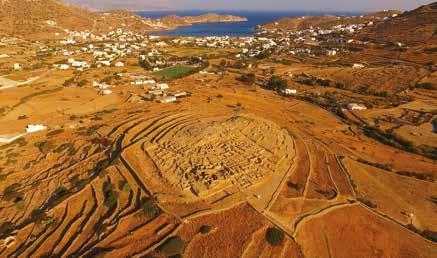
revealed a settlement of just over one hectare, with an organised urban plan and an estimated population of 200-300 people. It was built pericentrically on the hilltop, at different levels according to the natural terrain, with 55 two-storey rectangular slate buildings, with impressive walls up to four metres high, with enclosed courtyards, paved floors and staircases, with spaces for cooking, domestic work and food storage, arranged in concentric zones around large central streets two metres wide, public spaces and squares. A complex water drainage system was also found at Skarkos, as well as marble workshops and a number of important movable artefacts.
“The movable findings -–idols, clay and stone vessels, bronze, stone and bone tools, sealed clay objects- are impressive and perfectly preserved for their time» writes archaeologist Dr Marisa Marthari, Director of the excavations: “The level of preservation of the settlement is unique and allows us to finally get to know the true shape of the societies that created the art of marble figurines in such an early period”.
Our knowledge of the early Cycladic civilisation comes mainly from the findings, the grave goods, brought to light by archaeological excavations in the cemeteries of the period, many of which had already been pillaged. “For this reason, the systematic excavation of Skarkos [...] not only fills a major gap in our knowledge of Cycladic prehistory regarding settlements, but also sheds light on the socio-economic conditions that prevailed on the Cycladic islands during the Early Bronze Age” stresses Dr Marisa Marthari.
Most of the movable artefacts can now be admired in the Archaeological Museum of Chora, which is very important for the visitor to get a more complete picture of this distant era as reflected in the prehistoric state of Skarkos. The excavations and archaeobotanical remains show that the inhabitants of Skarkos were involved in agriculture, animal husbandry, artisanship and trade, the processing of obsidian, and even had developed a significant trade network with other important centres of the period, as well as a high degree of specialisation in crafts such as stonemasonry, pottery and marble working. It seems that the structure and organisation of the Cycladic world in ancient times was much more complex than experts believed until recently. The excellent conservation and the exemplary promotion of the Early Cycladic settlement-archaeological site, harmoniously integrated into the natural environment and the island landscape, with the terraces, the lime trees, the chaste trees, the lentisks and the oleanders, led to a very important distinction: the First EU Prize for Cultural Heritage in 2008 (Europa Nostra).






Στο χωριό του
INEXTRICABLY LINKED TO THE CULTURE AND TRADITION OF TINOS, THE ART OF MARBLE CRAFTSMANSHIP IS KEPT ALIVE IN PYRGOS, WHERE YOU CAN ADMIRE ITS CREATIONS IN LITERALLY EVERY CORNER OF THE VILLAGE.
The village of Pyrgos, a declared traditional settlement and one of the most picturesque spots in the Cyclades, is the heart of marble art and the birthplace of the great modern Greek sculptor Yannoulis Chalepas. Marble craftsmanship, the art of quarrying and working marble, dates back to the Byzantine period on Tinos and flourished in the 18th and 19th centuries. Since 2015 it is included in the UNESCO Intangible Cultural Heritage list. Every corner of Pyrgos looks like a piece of art, preserving its unique architecture and resembling a real open-air sculpture museum: whitewashed houses with marble ornaments and coats of arms, ornate doors and arches, paved streets and marble alleys. The village square is unique: paved with marble and dominated by a plane tree, it takes you back in time. Wander the picturesque alleyways of Pyrgos and enjoy the art of marble at every turn.










The Preparatory and Vocational School of Fine Arts of Panormos -the former name of Pyrgos from the homonymous bay- which keeps alive the tradition of marble craftsmanship, could not be located anywhere else. Founded in 1955, the School aims to combine the tradition of marble craftsmanship with its future. Students from various parts of Greece are taught the secrets of marble carving under the guidance





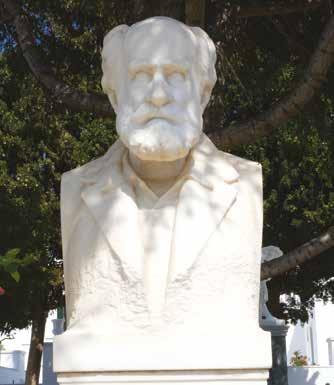
of Leonidas Chalepas, a descendant of Yannoulis Chalepas.
Architect and sculptor Leonidas Chalepas, who has had a distinguished career in the United States and the United Kingdom, returned to Greece in 2015 to head the school and teach its students, cultivating, together with the rest of the faculty, their special talent for creating living forms with this hard material. Works by the school’s students have been exhibited in Tinos, Athens and Thessaloniki and have received critical acclaim. The school has produced hundreds of worthy craftsmen and artisans, marble carvers and sculptors.
Next to the building of the School is the Museum of Marble Crafts, the first of its kind in Greece, creating an imaginary bridge between the future -the young marble artists- and the past -the artists who laid the foundations of the art.
It is a small museum that does not take up much of your time, but you will be fascinated by the exhibits and the audio-visual material, and you may well spend hours there. There you can learn about the traditional techniques and processes involved in working the marble, from the raw material to the finished product. The exhibition also extends to the museum’s outdoor areas, where you can enjoy concerts, exhibitions and other events throughout the summer.
At the entrance to Pyrgos is the Museum House of Yannoulis Chalepas, intact as the great sculptor left it. Passing by on the outside, you might not realise that it is a museum, as it looks like just another one of the village’s characteristic houses, white with blue windows. A marble plaque informs visitors that Yannoulis Chalepas was born here. The personal belongings of Yannoulis Chalepas are still there as he left them, as well as his bedroom and workshop, giving the visitor the feeling that the famous sculptor has just stepped out. The museum displays some of Chalepas’s most important works, as well as his drawings and photographic material.
The house of Yannoulis Chalepas is located next to the Tinian Artists’ Museum of Pyrgos. Both museums have a common ticket. There you can admire about 50 sculptures and reliefs. As well as the sculptures in their finished form, you can also see authentic plaster casts of the works that are to be carved in marble.


















Nestled on the idyllic Andros Island, Golden Vista Suites offers an unparalleled blend of luxury and natural beauty. Each suite boasts magnificent sea views that greet guests every morning, providing a serene and breathtaking backdrop to their stay. The architecture and decor of the suites seamlessly blend modern elegance with traditional island charm, creating a perfect haven for relaxation and rejuvenation. Whether enjoying the panoramic vistas from a private balcony or lounging in the sophisticated interior spaces, guests are enveloped in an atmosphere of tranquility and indulgence. Golden Vista Suites goes beyond mere accommodation, offering a host of premium amenities designed to elevate the guest experience.


Chora, Andros
Cyclades, Greece
+30 694 096 1934
info@goldenvistasuites.gr
goldenvistasuites.gr























Find out the best experiences that match perfectly with your travel style. Book tours & cruises on Andros island, at the best prices and with unlimited support. Explore & compare hotels with unparalleled sea views. Contact us to get the best local advice for your trip to Andros! Also, discover Andros Luxury Concierge by Explore Andros, our new accommodation management service.




FEMALE DEITIES AND THE FATEFUL MORTAL WOMEN OF THE ANCIENT GREEK MYTHOLOGY ARE INEXTRICABLY LINKED TO THE CYCLADES AND GIVE A DIFFERENT PERSPECTIVE ON THE FEMALE PRESENCE IN THE AEGEAN ISLANDS.

H The marble statue of the mythological Tethys, wife of Ocean and mother of the Cycladic nymphs, adorns the façade of Palazzo del Lloyd in Trieste, Italy.


TKhe Cyclades; dozens of islands scattered across the Aegean Sea. They form a circle (hence their name) around Sacred Delos, the birthplace of the god Apollo. In his Histories, Herodotus describes the Cyclades as the islands “tied to the chariot” of Naxos. Other ancient writers, such as Thucydides, Strabo and Callimachus, also refer to this group of islands, which gave rise to the Cycladic civilisation, one of the most important in human history. Along with history come myths, inexhaustible and impressive, and some of them are female: nymphs thrown into the sea to become islands, goddesses who protect marine life but also heal women, princesses who saved the islands or gave birth to their founders, but also mortals who gave birth to gods and became immortal forever
Their father was Oceanus, the oldest marine deity. Their mother was Tethys, his wife and sister. Their parents were born from the mating of Chaos and Gaia, prompted by -who else?- Eros. They, in turn, gave birth to myriads of children -according to Hesiod’s “Theogony”, three thousand rivers (gods) that “flowed abuzz” and three thousand Oceanids with slender legs that ran through the Earth and the depths of the sea. And their children birthed other chil-
H Above: A mosaic depicting Ocean and Tethys, at the Zeugma Mosaic Museum in Gaziantep, Turkey.
Left: An ancient statue of Leto.


ELYSIAN LUXURY HOTEL & SPA 5 ***** introduces a brand-new holistic holiday experience and redefines the essence of luxury accommodation in Kalamata. Located on a waterfront property where the endless blue of the Messinian sea meets the blue of the clear Greek sky.
Set amidst a serene landscape, embraced by the endless blue of the sea and adorned with windswept palm trees, our infinity shaped swimming pool invites you to enjoy summer time at its best. Take in the view while you laze around the pool surrounded by gazebos and sun beds.
An elegant collection of 44 luxury rooms and suites with 22 private pools welcome our guests to an oasis of splendor. Choose one of our 22 luxury rooms or 22 luxury suites from a palette of colors that captivate the infinite white, the light blue, the soothing colors of the earth, the stylish grey or black, and the mysterious deep violet.






H Above: The Fountain of Oceanids (known locally as the Naked Ladies) at York House Gardens in Twickenham, England. Right: Statue of Amphitrite. νας,

dren, who were to dwell on the islands and in the riverside towns.
In the sea, however, Poseidon was the ruler, imposing his will with his emblematic trident. When he struck the waters, he caused natural disasters, storms, shipwrecks and floods; when he struck the earth, volcanoes erupted, rocks fell and chaos ensued. According to legend, this is how the Cyclades were created. Poseidon, enraged by some of the Oceanid nymphs, turned them into giant boulders and threw them into the middle of the sea. Besides, he was notorious for his tremendous tantrums -remember the ten years it took the resourceful Odysseus to reach his Ithaca as a result of the god’s wrath.
Leto was described by Hesiod in his “Theogony” as dressed in blue veils, always gentle and kind to gods and men. Daughter of Titans, it was no wonder that she inspired a great love to Zeus. Nor that she provoked the jealousy of his wife Hera, who pursued her mercilessly to the four corners of the Earth. However, she fled to Ortygia, an island floating in the sea, and there she managed to give birth to the divine children of Zeus, first to Artemis the “arrow thrower” and then to the luminous Apollo. And so the island was named Delos, “the one who reveals”, because the god of music and light was revealed there. Poseidon fastened it to four pillars that reached into the depths of the sea, so that it would no longer roll in the waves.
Poseidon may have been the god, but it was a woman, Amphitrite, who ruled the seas. Ac-



Αμφιτρίτη,
cording to Hesiod and Apollodorus, she was one of the fifty Nereids, the nymphs famous for their beauty who lived in the depths of the oceans. Amphitrite and Poseidon lived with their son, the mighty Triton, in a palace of golden chambers at the bottom of the sea. On land, however, and especially in Kionia of Tinos, just 3 km from Chora, is the only temple in the Cyclades, dedicated to the ruling couple of the sea. According to the sources, the sanctuary, built at the end of the 4th century BC, was dedicated to Poseidon as a healer and Amphitrite as a healer of women who could not conceive. In fact, the islanders organised celebrations in her honour, the “Poseidia” or “Posidonia”, which attracted crowds of believers from all over the world. Dolphins and seahorses featured prominently in the sculptural decoration of the magnificent temple, and according to historical accounts, two huge statues of the two gods dominated the space. Some of the artefacts unearthed during the excavations are now on display at the Archaeological Museum of Tinos.
Semele, the mortal who became
“Cadmus’s daughter Semele bore Zeus a brilliant son when she laid with him; the delectable Dionysus, an immortal son of a mortal mother. But now they are both gods”. This is how Hesiod describes the myth in his “Theogony” about one of the daughters of Cadmus, King of Thebes, and Armonia. Unfortunately for Semele, she fell in love with Zeus, unaware of his royal status. When a jealous Hera learned of the affair, she disguised herself as Semele’s nursemaid and persuaded her to beg her lover to reveal himself in his true stature. But when Zeus appeared before her in his divine form, wrapped in blinding light on his chariot and throwing thunderbolts all around, Semele, though overwhelmed with love, froze in terror -and died. The fruit of their love would have died, too, had not his inventive divine father sewn him to his thigh to keep him safe until he was born. According to one version of the myth, the baby grew up on Naxos thanks to three nymphs. Perhaps that’s why they called the island a nurturer of the gods -where else could the god of wine, Dionysus, have been raised but on the most fertile island of the Cyclades? Semele and her son were also worshipped in Mykonos, where festivals and sacrifices were held in their name. Dionysus’s love for his mother was immense. That’s why, when he took his place among the gods, he descended into Hades, found Semele and raised her to the top of the Olympus -and the mortal became immortal.

Naxos was not only the place where Dionysus grew up, but also where he met the love of his life, Ariadne, the daughter of the king of Crete, Minos. But how did the princess of Knossos get to Naxos? When the legendary Theseus, son of Aegeus, King of Athens, arrived in Crete with the other young men who were to become prey to the appetites of the Minotaur, Ariadne gave him a ball of thread -the “Mitos of Ariadne”- so that he would not lose his way in the labyrinthine maze. After killing the Minotaur, Theseus took the princess with him and sailed to Athens. On the way they stopped at Naxos

H Marble statue of Cassandra under the protection of the goddess Athena (1877), work by Aime Millet, at the Jardin des Tuileries, in Paris.
due to rough seas. As he slept, the god Dionysus came to him and told him to leave Ariadne on the island and go to Athens. Although heartbroken by the betrayal, Ariadne may have found a better fortune. She accepted the sweet wine and a golden luminous wreath as tokens of the eternal love of the god Dionysus, and remained a devoted wife at his side.
Pareia was also a nymph and a beautiful one. Perhaps that is why King Minos fell in love with her and they had four sons on the island now called Paros. Whether the island was named after the nymph or vice versa is not known. What is certain is that Parikia of today is none other than the ancient city of Minos, founded by Minos’s grandson, Alkaeus, who was also the island’s governor. All four of Pareia’s sons,
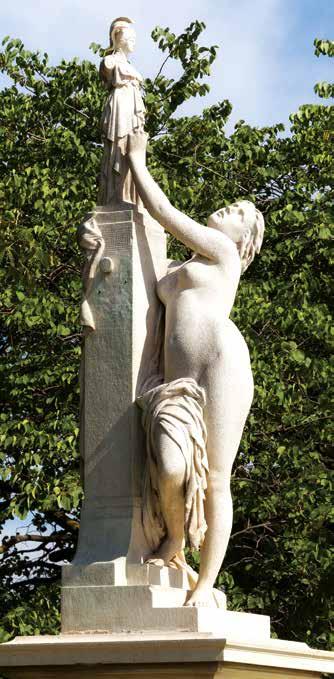



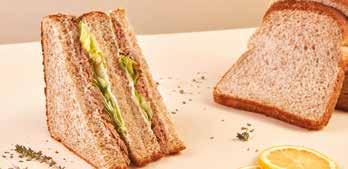
έγινε κι όταν προφήτεψε ότι ο Πάρης θα έφερνε την καταστροφή (λόγω του έρωτά του με την Ώ ραία Ελένη), ή όταν προειδοποιούσε
however, met a terrible end. They got into a fight with the companions of the brave Hercules, who had stopped in Paros on his way to fulfil one of his labours. Hercules’s companions were killed, and he in turn killed the sons of Pareia in retaliation. The people of Paros, fearful of what was to come, begged him to take whomever he wanted from the island to replace his lost comrades. Hercules took with him the grandchildren of Minos, perhaps symbolising the prevalence of the Mycenaean civilisation on the island, which was once an important Minoan centre.
Daughter of Priam, King of Troy, and Hecuba, she was given the gift of prophecy by the god Apollo. It was, however, both a gift and a curse, as her prophecies, though proven correct, were never believed. So, unfortunately, when she prophesied that prince Paris would bring destruction (because of his love for Helen of Troy), or when she warned the Trojans not to let the Trojan horse into Troy, nobody listened to her, with the well-known (catastrophic) results. But how is the Cassandra of Troy connected to the Cyclades? In Mykonos, Ajax, King of Locris, found the fairest punishment. The reason was that he raped the seer Cassandra in the temple of the goddess Athena, even though she begged him not to touch her. Not only the gods, but also mortals never forgave him for this brutal act and sacrilege. His ship was sunk by the thunderbolts the gods threw at him, and later he was thrown from the rocks where he had taken refuge to save himself. According to one version of the myth, the arrogant warrior is buried on the beach of Ftelia in Mykonos. The horrific scene of rape has been portrayed in art many times, from ancient times to the present day. Cassandra was eventually destined to become Agamemnon’s mistress, as all the Trojan women were given to the victors by lot. He fell in love with her and met a tragic end when his wife Clytemnestra and her lover Aegisthus killed them both. So perhaps the Greek saying “don’t listen to the Cassandras” has no basis in mythology -because Cassandra was always right.

Although the prevailing theory about the name of Tinos refers to King Tinos, who came to the island from Asia Minor in prehistoric times, a local legend has it that the Cycladic island was named after a princess. More specifically after Tinos, who got exiled by her cruel father to a desert island, full of snakes. The cause of the king’s wrath is unknown. However, she managed to survive by setting fire to the snakes and killing them. This tradition is probably based on the ancient moniker of Tinos, Fidousa or Ophiousa, although according to scholars, the moniker may



have referred to “fida”, a type of cedar that existed on the island. Another version of the myth says that Poseidon destroyed the snakes and the islanders, in gratitude, built a temple in his honour (and that of his wife Amphitrite) at Kionia.
Rhoeo was the daughter of Staphylos, son of Dionysus and Ariadne. She mated with the god Apollo and they had a son, Anios. However, her outraged father, believing her pregnancy was due to her love for a mortal man, threw her into the sea after locking her in a crate. According to Diodorus Sikeliotis, the crate was washed up on Delos, where Rhoeo gave birth and laid the baby on the altar of Apollo, begging him to save him. Indeed, the god taught the child the art of divination and treated him with great honour. From his marriage with Dorippi, Anios fathered many children, including two sons, Andros -the first settler of Andros- and Mykonos -the king of Mykonos. And so, two Cycladic islands acquired their name, thanks to Rhoeo.
According to ancient tradition, Ios was the home of the mythical mother of Homer, the legendary poet of the Iliad and the Odyssey. In fact, Herodotus mentions that this is the burial place of the great epic poet. While there are different versions of the story of Critheïs, such as that she was a nymph who mated with the river god Meles and gave birth to their child, there is also another story; that she was a young virgin from Ios who was seduced by a demon and fled to Aegina to save herself. But her adventure continued. She was abducted by pirates and taken to Smyrna, where she eventually married King Meonas. She is said to have died in childbirth, but the child born near the river Meles in Smyrna was named Melesigenes, and later Homer, because he was blind -“unable to see” in ancient Greek.






A GREAT THEATRE ACTOR WHO BROKE RATINGS RECORDS AS MATHIOS IN “SASMOS”, PROVING THAT AUDIENCES APPRECIATE THE TALENT AND HARD WORK BEHIND A ROLE.
ΒY ZOE PAPADOPOULOU PHOTOS: ANDREAS SIMOPOULOS
STYLING: SOPHIA TSAKIRI GROOMING: MORFE

ITgot to know him as “Hector”, a character he studied for a long time to play in theatre. He is a perfectionist; absolute, explosive, brilliant and human. Dimitris Lalos devotes himself to what fascinates him, gives his soul and his essence, and the audience probably understands this. The audience, which is always right, fills the theatre when he takes to the stage and is riveted when he appears on the screen.
What is your overall experience of “Sasmos”?
Now that my character has died, there’s a lot of buzz. Today I got over 200 messages on my mobile. They thank me for my performance over the years, they tell me they are very sad now that I am “dead”, others cry -it’s incredible. It’s happened in the theatre that after a performance, people would speak to me very excitedly and others would shake my hand without even being able to talk; and I feel very honoured by that. But I have never experienced the extent of the reactions that have been directed at me because of “Sasmos”.
What do you think has touched people so deeply about this series?
I think it’s due to a lot of factors; like it’s a very good work, with good performances, but sometimes we as artists don’t know exactly what makes such a successful recipe. Otherwise we would only be successful. There is something intangible, above the facts, something we don’t know, and I think there is such an element in “Sasmos”. There are other shows with good direction, good actors, equally good script, but they haven’t achieved the success of “Sasmos”. As the producers say, this happens every 10 years. So there is no clear explanation for some things. As for the whole frenzy with Mathios, I think a lot of things played a part. Definitely my acting style, which I have studied for many, many years in front of the camera. It’s also something I teach. Many people who are not in this job tell me that they were touched by the way the role was approached. On the other hand, it’s also a character with passions -he has a very strong element of kindness, but he also has a very intense anger, and all of that dramatically draws the viewer in. Also, all these years I have done a lot of realistic theatre and my theatre training was also based on realism. So I was lucky enough to be trained in a direction that helps me with cinema.
How does realistic theatre, as you call it, differ from theatre in general?
Substance and content must have a form in order to exist. This form is realism and it’s the only form that works in cinema. No other form of acting works in cinema -anyone who has tried anything else has failed. In realistic theatre you also have to improvise, to be free, but within a specific form. Let me give you an example: someone is crying -that is the context. The question is how to cry. Because Clytemnestra will cry one way and a Tennessee Williams heroine another. So you have to understand what form you are in, in order to perform accordingly. This is the realism that comes from Stanislavski -he made the breakthrough, he said the magic “if”. That is, what would it be like if you were to use your own personal means? How would you react if you were in the character’s shoes?
I was impressed when I saw you in the theatre recently, in “Hector”, where you played your part but were also someone who interacted with the audience.
This is a different form, which in a way I would say is personal. There’s something personal about this approach, being on stage in a dual role, playing my part but at the same time hinting at the fact that it’s me talking



Hto you. I haven’t been taught by anyone, it’s something I’ve been working on myself for nine years.
Did your relationship with Crete change after the series?
I would say that Crete was one thing to me before “Sasmos” and it is another thing now. The whole time I was there, that place transformed within me. Now, it has become a special homeland for me. It is as if there are two Cretes. The ordinary Crete, where you go on holiday or whatever, and there is also an ideal Crete, imaginary, the Crete of Mathios. It is a fantastic country where I travel with my mind. So for me, this island, which has always been very dear to me, has taken on a new dimension. I don’t think there is anyone who has been to Crete and hasn’t loved it. It is a very great pillar of the Greek culture -and not only.
Vendetta, the theme of “Sasmos”, still exists in Crete.
Often the beliefs we have as young children are built up and reinforced as we grow, and we don’t even know where they come from. We still believe some things that we don’t know why we believe them. The vendetta is one of those things that comes from tradition -and tradition has its good aspects, but it also has some bad aspects. The coin has two sides. However, I believe that things are slowly changing and that Crete is becoming more modern in this matter. The new generation sees it very differently, and over time such phenomena fade away. Because apart from the vendetta, there is also the “sasmos” [Translator’s Note: it is the reconciliation of two families in order to put an end to a vendetta].
Did Mathios exist in some way in your life?
Before Mathios I played Hector, before that a neo-Nazi skinhead and be-
I want to devote my time to very meaningful projects, bigger than myself H
fore that a pimp in Peru. I mean that I always do what I do with the same dedication, which does not mean that I take them all back home with me. That’s my job.
What will you be doing at the theatre in the new season?
On 6 October we play at the Odeon of Herodes Atticus, again with the group I did the “Chopin’s Heart”. It will be a symphony orchestra with a Polish conductor, dedicated to the music of Chopin and the Romantics of that time. I will also be starring in a new TV series on Alpha called “Timoros”, directed by Michalis Konstantatos. It is inspired by Alexandre Dumas’s “The Count of Monte Cristo”. A man is unjustly imprisoned for 20 years for something he didn’t do, they rob him of his entire youth, and when he gets out of prison he will take revenge on all those who hurt him. However, it follows the archetypal aspect of Dumas, who says that he may be avenging personal issues, but those he is avenging have done far greater evil, so he is actually avenging evil.
You usually tackle difficult subjects...
… Although I do have a flair for comedy. As far as television and cinema are concerned, again talking about form, the comedy part is not something that can be brought out. Cinema is very much based on the close-up. In comedies in cinema and television, there are no close-ups -notice this in “Friends”, for example- there are only medium and wide shots.
Would you like to play comedy in theatre? Have you thought about it?
I’m 45 years old. In the next 10 years I have 10 plays to perform, assuming I’m going to perform every year. So I don’t want to spend these 10 performances in a light play that will get a few laughs. I want to devote my time to very meaningful projects, bigger than myself, that will force me to “grow” as well. I’d probably like to play Shakespeare, but I’d have to find the time to do it properly because it’s something that takes a lot of work.
What relaxes me is a good chat with a friend, a good meal, a walk by the sea -simple things that everyone loves.
The photo shoot took place at the Malconi’s restaurant (www.malconis.gr), to the management of which we would like to express our gratitude for the hospitality.
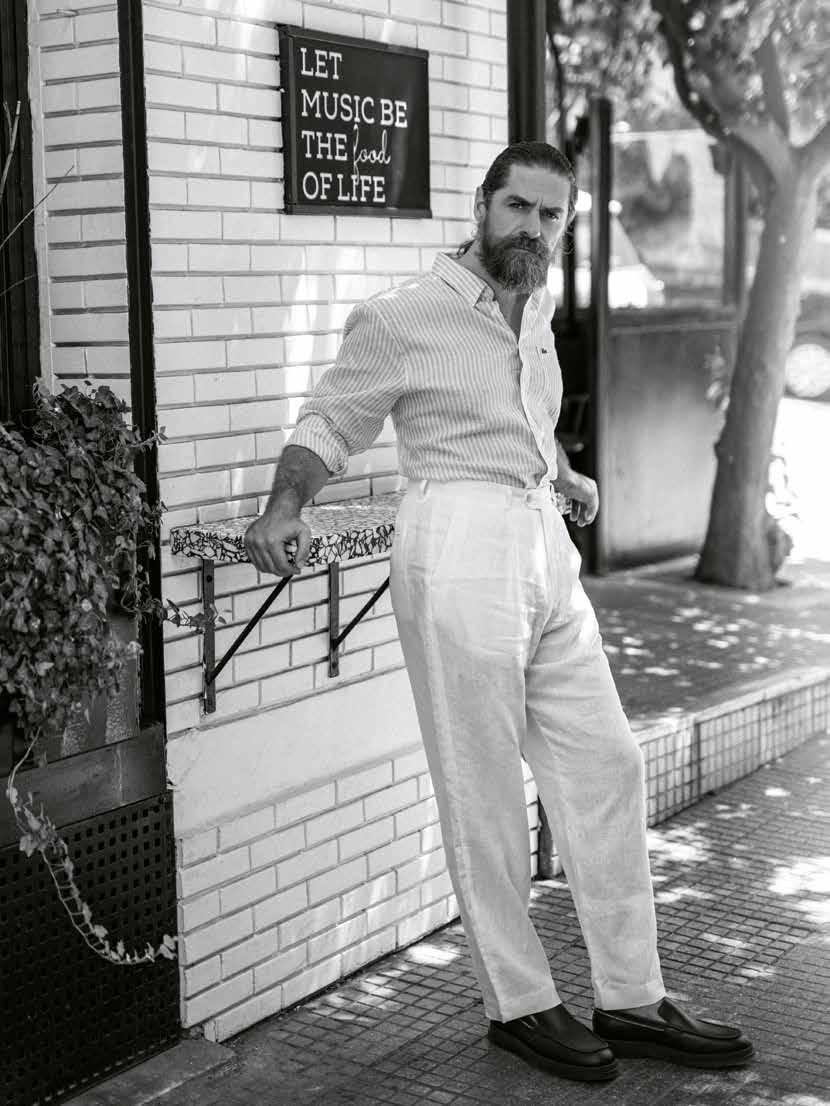

WHY IS IT THAT WE TEND TO MAKE THE MOST IMPORTANT DECISIONS ABOUT OUR LIVES IN THE SUMMER? WE TRY TO GET TO THE ANSWER WITH THE HELP OF PSYCHIATRIST/PSYCHOTHERAPIST GEORGIOS NIKOLAOU AND WE DISCUSS VARIOUS PSYCHOLOGICAL ASPECTS OF THE HOLIDAYS WITH HIM.
H BY ASTEROPI LAZARIDOU
Wfhen is the best time to make a bold new start in our lives and take the most important decisions for the future? Is it the New Year with the outlandish “New year’s resolutions” or is it the summer? Psychiatrist and psychotherapist Georgios Nikolaou tells us from his experience that it is the second.
“It is true that we are a summer people. What can we do? We live in an island nation, an archipelago of hundreds of islands, dazzling sunshine and endless kilometres of coastline. So where else could we have our reboot if not by the sea, at the height of summer? Of course, I don’t understand the rush to the seas and islands on the same 20 days of the year, when we still have 5 months of summer. But I do accept that for some professions it can be a dead end. Either way, I agree that the reboot that most of us do during the summer holidays is a time for reflection and new decisions and plans” he says.

Often people in psychotherapy make drastic changes over the summer because of the long absence from sessions that they are forced to take during the summer months, perhaps unconsciously in order to return to their therapist with new and exciting material. They break up after a long-term relationship, decide to divorce, change jobs, etc. What does this tell us about our psyche? “I personally disagree with the long forced absence. I was taught this as part of my training, but I still don’t understand what kind of rule it is. Of course we are all entitled to our holidays, but for a therapist to be away from work for two months, as I have seen happen, I think is bad practice. Our lives and problems carry on, they don’t take a break. So we have to be there. Nonetheless, abstaining from psychotherapy for a normal holiday period usually has a positive impact. It is the moment when the pieces of the puzzle fall into place and lead to a better understanding of things. Just as when we sleep, the solution is waiting patiently in our minds the next morning. This way, people in treatment will be able to make meaningful and potentially good decisions. In this case, things have probably gone well. But if these changes are intended, as you say, to provide exciting material for discussion in our psychotherapy sessions, then this is not good news. It is an unconscious attempt to stir the pot, to act out, as we say, to escalate or accelerate events, just to maintain the interest or compassion of our therapist or who knows what else. It’s a bad advisor for our important decisions”.
More and more often, we feel more and more tired. The bombardment of very negative news, the aftermath of the lockdown and the pandem-

ic, the constant alienation, has brought us to a point where one summer is not enough to help us: “The pandemic, with all its problems, was a big slap in the face for the whole world, but I don’t think that’s where the focus is. Unfortunately, mental fatigue, anxiety, depression, as well as the simpler, less clinical problems, are «breaking the bank» these days. It would be an oversimplification to explain this huge problem in a one-dimensional way; there are certainly many factors contributing to this trend of deteriorating mental health.
”In my experience, however, the issue of alienation is central. Just like any other change that takes us away from our simple but essential needs, as Maslow described them seven decades ago: safety, rest, physical activity, light and space, entertainment, self-control, communication, companionship, purpose, all those small but very important things. At least, as far as we can, we should claim them on our holidays, when we are not pressured by all the other circumstances of our business-as-usual lives. And so, we may finally learn how to change our lives as a whole, so that our needs are better met during the rest of the year”.

What if someone really wants to go on holiday but can’t find the right company? “Meaningful contact and communication has become more challenging, and for good reason! It is very good that we are gradually ceasing to tolerate more problematic attitudes and behaviours, but this inevitably makes contact more difficult, more «eclectic». So, ineluctably, many of our fellow humans will find themselves alone and in such impasse just before the summer. What happens then? When life gives you lemons, make lemonade! It can be very difficult to find a life partner, an everlasting pillar of support, I agree. But you don’t need that person to go on holiday. Good grief! Basic communication and a simple alignment of interests is more than enough. You can go with a friend -not even your best friend. In such



less planned or anticipated meetings, participants are usually pleasantly surprised. Precisely because their expectations are not exaggerated. Of course, going solo is also an option with many potential benefits and lots of fun”.

So would it be a good idea to stay off social media while we’re on holiday, or if we don’t post about where we’ve been, it’s as if we weren’t there? “I don’t usually take an absolute position, but I will now. Can you throw your mobile phone off the boat when you go on holiday? Do it! I’m not going to chase dragons by saying how destructive and evil social media is. Any progress can be very frightening for many people. But there is a less Don Quixotic, and therefore better, argument. Are you sure you want your precious moments to be lost and never imprinted on your memory? Do you want your whole life to be inside you, in your memory or on a feed? I remember seeing the same thing at one of the many concerts last summer: during the best part of the group’s set, I could see hundreds of mobile phone screens in front of me recording video, with corresponding pairs of eyes looking at them. And I wondered what they were doing, why they were there? Why did they pay for a ticket? Why didn’t they just watch another YouTube user’s video afterwards? Did they have as much fun as I did, being 100% there? I do not know. What I do know is that I had a great time and I haven’t forgotten it, even though I didn’t upload anything”.
Summer, it turns out, is the best advisor for sailing towards the path of life we really want to take from September onwards: “Summer, when we’re not working day and night, is definitely a time to think, observe, reflect and plan. So yes, I would say it could be a good time to make our decisions. As long as they are flexible and without excessive expectations, so that we can deliver”.
As for his favourite island on the Cyclades map: “All our islands have their own magic. If I had to choose, I would say that Koufonisia have stolen my heart the most so far. But I always expect another beautiful place to take the lead”.





H ΒY MARIA ATMATZIDOU
FROM THE “MARRIED” FAVA OF SANTORINI AND THE FOURTALIA OF ANDROS TO THE ONION PIE OF MYKONOS AND THE TRADITIONAL TSIMETIA OF IOS, THE SPECIAL, TRADITIONAL FLAVOURS OF THE CYCLADIC ISLANDS SURPRISE AND ENCHANT THE VISITOR.

THhe rocky, arid land of the Cyclades, the sea with its breeze grafting everything around it, the aromatic herbs and the wild greens that grow everywhere, the fruits and vegetables in the island crofts or the olives, vines and cereals, but also the animals that graze freely; are all common to the Cycladic islands. Together comes their long history, the influences of the peoples and cultures that have left their mark on this island complex, but also the perpetual effort of the islanders to tame the elements, to transform the barren land into fertile soil and to make the most of what the ground has given them. Cycladic cuisine is strongly identified with the place that gave birth to it. Light, simple, authentic, with quality ingredients and the passion of each island’s inhabitants, who add their own touch to the local repertoire of flavours. This is evident at the traditional Cycladic feasts, where along with dancing, singing and joyful reunions, wine, raki and souma flow in abundance, as well
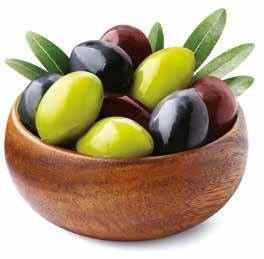

as the most representative local dishes prepared by the islanders to welcome us to their land.
(ναι, ακόμη και το καλοκαίρι!), καλτσούνια με καρύδι και μέλι, τραγανά παστέλια, γλυκά του κουταλιού (όπως το καρυδάκι, ο ανθός του λεμονιού και το παμπιλόνι), αμυγδαλωτά πασπαλισμένα
The second largest island of the Cyclades is full of contrasts: high mountains, a rocky coastline, endless sandy beaches, running water from numerous springs and a rich biodiversity. One of the most fertile Cycladic islands, Andros has all the ingredients to create one of the most delicious island cuisines. The star of the show is the fourtalia or froutalia of Andros, a delicious omelette with fresh eggs, local sausages and potatoes that is certainly unlike any other. The potatoes are cooked in pork fat or with sausages, then eggs and herbs such as oregano and spearmint are added to give the dish all the flavours



of the land of Andros. Ideal for dipping our sourdough bread is the thick egg and lemon sauce from the pork with leeks and celery, as well as the “seskoulodolmades” (stuffed chard leaves). Even if it’s not Easter, try to find the fragrant lamb stuffed with eggs, rice, cheese, milk, chard, spearmint and parsley. Try the cured pork, the thinly sliced louza and the local cheeses such as petroti, marathotyro, volaki and kefalaki. And of course, treat yourself to kourabiedes (yes, even in the summer!), kaltsounia with walnut and honey, crunchy pasteli (honey sesame bars), spoon sweets (such as green walnut, lemon blossom and pomelo), almond cookies sprinkled with icing sugar, but also “pastitsakia”, the rounded, fluffy almond pastries, along with the traditional soumada, the drink made from almonds and bitter almonds, sugar and rose water, which accompanies the joys of the islanders.
A bite of the delicious meze with freshly fried sun-dried tomatoes, a forkful of arathkies, mountain mushrooms cooked in wine or a piece of bread dipped in a thick sauce of celery with lemon will awaken the senses. And if fourtalia is perfectly associated with Andros, there is also the characteristic omelette of Tinos, another version of fourtalia, made with fresh eggs, delicious local sausages and cheeses, potatoes and often with the famous artichoke of Tinos (delicious!). Livia (string beans) with red tomato sauce and grated kefalograviera are also delicious, as is the special savore with molasses, fried bogues or picarels topped with a thick sweet and sour sauce. The repertoire of flavours also includes the louza of Tinos (different in taste from the louza of Mykonos) and definitely the cheeses of Tinos: petroma, strongylo, kopanisti, malathouni and graviera. Everything is delicious, especially if accompanied by local raki in an inviting square with mar
Το


ble fountains or in a traditional café in the villages of the hinterland. To sweeten the palate, the absolute stars are the sweet cheese pies with the excellent local mizithra. The fragrant tartlets with their “tsimpiti” dough, hand-embroidered around the fluffy cheese filling (hence their name), really melt in your mouth.
The cosmopolitan character of Mykonos may not predispose you to try the local delicacies, but its traditional cuisine is truly special. So much so that you don’t know what to choose first. Its cheeses are excellent: the savoury and sometimes spicy kopanisti (perhaps its most famous cream cheese), tyrovolia or rovolia (the white cheese that goes perfectly with the island’s pies), but also xinotyro or xinomizithra. The same goes for Mykonos sausages, cured in salt and flavoured with peppers, spices and oregano, as well as the local pork louza, flavoured with spices and the herb savory. The sea breeze comes to your table with the fried “kollisianoi” (sea anemones), while the famous crispy onion pie of Mykonos, sweet onions mixed with soft white cheese and dill, brings all the scents of the arid, but so charming land. Just like the louvia (string beans) casserole that are sometimes served with meat. To fill your soul with that special sweetness, try the crunchy almond cookies in the oven or in the pot, sprinkled with rose water and icing sugar, or the sweet tartlets with almond filling.
Your table in Paros will always smell of the sea. Especially the
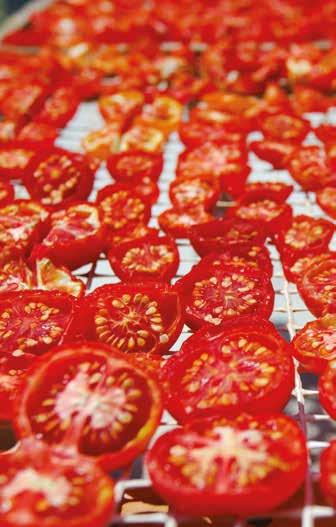
star of the delicacies of Paros, the gouna, mackerels “cooked” for hours in the hot sun and then grilled. Spicy and juicy, drizzled with lemon oil and parsley, they accompany the icy souma, the drink of Paros. There is also salatouri, the traditional fish salad with stingray, or crispy kalitsanokeftedes, fried sea anemones with cheese (like the kollisianoi of Mykonos), or stuffed squid with rice. A typical dish with all the scents of nature are the traditional chortofouskotes pies with seasonal greens, fried or grilled mushrooms, as well as karavoloi (snails) stewed or grilled. The latter, served with skordalia, is the local delicacy enjoyed at traditional fairs, along with baked chickpeas and fragrant seafood meze. The food in Paros is simple but delicious -and at the end of your meal, try some sugar baklava to sweeten it up!
Capers are plentiful on Ios, so enjoy them in all the local recipes and add the caper leaves to your fresh salads. Try the grilled, sundried picarels with their sea breeze, the local cheeses such as the creamy, peppery skotyri -an ideal meze to accompany your wine or tsipouro- or the tsimetia, fragrant courgette flowers stuffed with rice. The chickpeas grown on the island, slow-cooked in the oven, as well as the golden-brown chickpea fritters that arrive warm and hot on the table, are a dream. Matchi and mermitzeli, hylopites and orzo respectively, both handmade, are also representative dishes that are not to be missed! Always accompanied by a glass of the


strong tsikoudia of Ios! And if you like watermelon, don’t hesitate to try a spoon dessert or a watermelon pie to feel the sweetness of summer.
Fava from Santorini! With a name of origin, this popular dish has spread beyond the island’s tables and is an integral part of celebrations and fairs, where it is cooked in huge cauldrons and served with capers.
“Fava, capers and tomatoes are the green ingredients of the cuisine of Santorini’s peasants, which has generally remained unaltered” writes Diane Kochilas, in her book “Greece of Taste” (Ellinika Grammata Publications): “Fava was as important as bread and appears in many recipes. It is the basis of many soups, cooked with aubergines and tomatoes, pureed with boiled capers, «married», as the locals say, with fried onions, turned into croquettes and fried, but also in pies with meat or fish”.
Another PDO product today is the cherry tomato, a special variety with a sweet taste and distinctive aroma that is said to have arrived on the island from Egypt with the captains of Santorini 160 years ago. Santorini’s volcanic soil was ideal for growing tomatoes, and it is no coincidence that steaming tomato fritters are the island’s signature dish. The same soil is ideal for growing vines, so don’t leave without trying a sip (or more) of Assyrtiko Santorini wine. Perhaps with a forkful of white aubergines -which, like tomatoes, are thought to have originated in Egypt- juicy and sweet, with a wonderful aroma and unique flavour.

SHE MANAGED TO MAKE AN IMMEDIATE IMPRESSION AS AN ACTRESS IN A GENTLE AND DISCREET WAY.
NOW SHE IS TRYING HER HAND AT A NEW AND IMPORTANT ROLE, THAT IS MOTHERHOOD.
ΒY ZOE PAPADOPOULOU
PHOTOS: ANDREAS SIMOPOULOS
STYLING: SOPHIA TSAKIRI
MAKEUP-HAIR: MORFE
When I first saw her, I thought, I can’t quite define what exactly is that disarming charisma of hers that draws you in and you can’t take your eyes off her. I think it’s this simplicity and essence that characterises her acting, which seems effortless and so spontaneous, as if she’s always been what you see. Danae has an innate talent and a deep, true modesty that, combined with her tender heart, can only promise her a bright future.
You spent your childhood on an island…
I grew up in Syros, by the sea. We went there when I was two and I left when I was 19. It’s wonderful to grow up on an island, but if you take this life for granted, you can’t appreciate it. I had to go to Athens to study, to understand how lucky I was and to appreciate what I had. It was very normal for me to come out of my house and see the sea and have that carefree feeling. Other people work for a year just to have a few days off and experience that. Also, Syros is an island that offers you many opportunities to do creative things, so I was very lucky in that respect as well. I was dancing, learning the santouri, making pottery -I was always doing something. As a child I had everything, I didn’t lack anything. I feel like it was a big sacrifice for my parents because they moved there for my brother and me. They chose it so we could have a better life -we have no relatives there. My mother is a bal-

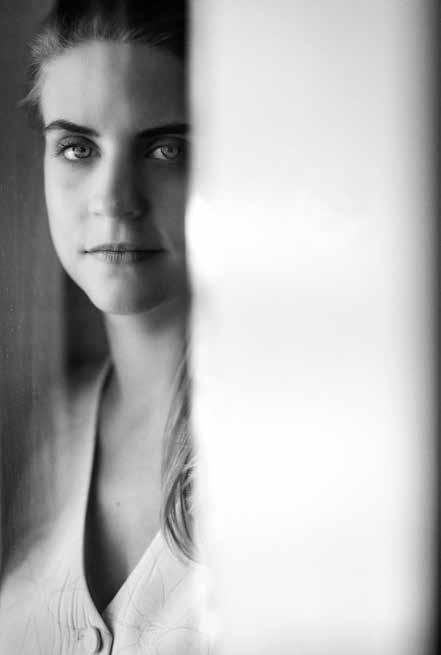
let teacher and opened a dance school there, and my father, an actor, commuted between Athens and Syros as much as he could for his work.
Art was a constant presence in your home. So was it somehow “predetermined” what you would do later in life?
Ever since I was a little girl, I remember saying that I wanted to dance or sing. Later, when I started going to dad’s plays and I was always backstage, I said I wanted to do theatre too. In fact, one day when I was at one of his shows, I realised that I could do all three things together! I thought I could do children’s theatre and combine the work of Mum and Dad. I think it was a one-way street for me from the beginning.
What did you do when you finished school?
I stayed in Syros for about a year to work and earn some money. Then I went to Athens to go to drama school, but actually my dad kindly “sent me away”. He did it because he saw that I was going to stay on the island longer, since I had my job but I had finished school and was more relaxed. On the other hand, Athens seemed to me a little bit like a jungle and I was somewhat reluctant to take the step to leave. I was afraid I wouldn’t make it -that’s why sometimes you need someone to give you a little push. At the same time, my parents were and are very supportive. So you trust them when they say “it’s time to go and build your own life”.
From what you tell me, you had a very happy childhood and adolescence, didn’t you?
I wouldn’t describe my adolescence that way. I was beside myself, everything was to blame and I couldn’t explain it. In retrospect, because unfortunately it’s the parents who suffer, maybe it’s something that children have to go through. Or at least, speaking for myself, I had to go through that wave of reaction to become what I am today.
Tell us about your first years in Athens.
I went to drama school, to “Kentriki Skini”, studied for three years and when I finished I did everything but acting! I worked as a waitress, I worked in a shop, I handed out flyers -I did everything. I wanted to be financially independent and at least relieve my parents of this burden. I was already working in my second year at school.
But why didn’t you go into the theatre?
I went to various auditions where I could, but in the end nothing worked out. Because I was also working, I didn’t have the time to be more serious and focused. Until one day I left all that behind and said “I don’t know how long it’s going to take, but I’m going to get a job as an actor”. And shortly after that I got a call to audition for the “Wild Bees” and they took me.


Πώς
Προτού
How was this experience? Because it was a very good TV series that people liked very much.
Basically, from the beginning I didn’t allow myself to get stressed, because when that happens I can’t function at all. I said “let’s dive in and do it as best we can”. The biggest difficulty I encountered was that my part was particularly dramatic, whereas I thought I was good at comedy. So, this role was a very big challenge for me.
When you have a dramatic part in your work, is it something that affects you, and do you carry that into your home, into your everyday life?
No, I don’t do that, but it is quite tiring. In the “Wild Bees” I was leaving the set exhausted, from these very dramatic scenes.
What did you do after the “Wild Bees”?
Before we finished shooting the “Wild Bees”, I had already secured my part in the “Beach”.
Have you worked in the theatre since?
Yes, I was in “Shear Madness” and “The Lonesome West” with Nikos Kouris.
How was your experience on stage compared to the TV shoot?
The feeling is completely different. In “Shear Madness” we had a lot of contact with the audience, because they participated on a practical level. TV is more in the moment, because you don’t have time to rehearse, to work more on your role. In theatre, you might have two months to rehearse a play, whereas in television you might have 20 minutes to work on a difficult scene.
Can actors in a theatre performance really perceive the feelings of the audience watching them?
I will say that they can, although I cannot explain exactly how. It’s like there’s a magical vibe going on -that’s the only way I can describe it. You can feel the energy of the people in some way. As the energy of the actor reaches the audience, so the energy of the audience reaches the actor.
What was it like working with the excellent actor and human being Nikos Kouris?
He is indeed unique. In general, we were a very nice team -Nikos Kouris, Giorgos Iliopoulos and Christos Malakis. We were very close to each other, because we played together in the “Wild Bees”. I remember saying that I wasn’t going to do any theatre in the winter, only shootings, because this double bill tired me out. But Nikos offered me the job and it was a great honour for me. I got so many things from that man. His generosity and willingness to help me, to show me, to teach me, “unlocked” things inside me. This collaboration was a masterclass. I now say that I have been lucky to work with three wonderful men.
What do you think your charisma is when it comes to your work?
I wouldn’t describe it as charisma, but what I do is concentrate on my work and not pay attention to what might be going on around me. Because otherwise things will affect you and you won’t deliver what you can.

HUGO, HONDOS CENTER. SUIT AND TOP, HUGO, HONDOS CENTER.
In theatre, you can feel the energy of the people in some way H
You have recently become a mother. Did you ever think that having a baby would set your career back?
I never thought of that! It was a very conscious decision to take a short break. So for now I’m not doing anything that takes up too much of my time with the little one, but I’m slowly starting to combine everything.
What were the first things you saw, changed or realised about motherhood?
I thought I was complete, but I wasn’t. Now I am complete. It changed my way of thinking about everything. It’s like there’s been a pause, the world has stopped spinning and now I’m doing this. I can’t describe the feeling, it’s something very strong and every day something else adds to it. It is so important to see a little thing discover the world every day -the joy that even a paper towel can bring her when she holds it for the first time.
Is her dad involved?
Of course he is. Our child is something we both wanted very much. Giorgos (Editor’s note: Papageorgiou, actor, director, musician, son of Filareti Komninou) is a very sweet father.
How involved are your parents?
My parents are crazy involved and have each added 10 years to their lives! The joy that a baby can bring to those around them is indescribable and it touches me deeply.
The photo shoot took place at the Theta Athens restaurant/cocktail bar (theta-athens.gr), to the management of which we would like to express our gratitude for the hospitality.


THE STUNNING ISLANDS OF THE AEGEAN SEA, THE HALLMARK OF THE GREEK SUMMER, BECOME EVEN MORE MAGICAL AS THE SUN SETS. WE REVEAL THE MOST REPRESENTATIVE SPOTS FOR AN ENCHANTING, UNIQUE CYCLADIC SUNSET. H ΒY MARIA ATMATZIDOU


There is no need to get on the tiny planet of Antoine de Saint-Exupéry’s beloved “Little Prince”, which is blessed with a thousand four hundred and forty sunsets every day! Just visit the Cyclades, where every day at sunset, each island is different but equally captivating.
Impressive geological formations, sand dunes or steep coasts, endless
The small and peaceful Port Panormos of Tinos at sunset.


Sunset at Fellos Beach in Andros.
stretches of sand, tiny beaches or secluded coves with crystal-clear turquoise waters that change a myriad of colours with the last rays of the sun. From the hospitable Cycladic Choras with their whitewashed churches, the traditional settlements, the squares overlooking the Aegean, the hillsides, the lighthouses, the rocks rising from the sea; wherever you want to enjoy the sunset, one thing is certain. Nature itself, in its simplicity, creates the most impressive scenery and catches you in its web.
The “island of the captains”, the second largest island of the Cyclades, with its numerous cool springs, its stone bridges, its lush vegetation, its countless marked paths and its houses with their special architecture, is also famous for its wonderful beaches, with sand or pebbles and crystal-clear waters. Chalkolimionas is one of the best-known and most popular beaches for visitors and islanders, but also a magnet for sunset lovers. And if the crowds bother you, the beaches of Fellos and Pisolimnionas offer better opportunities for peace and relaxation -especially the latter, in the north-west of the island, which offers a unique sunset. What could be better than plunging into the cool, crystal-clear waters of the endless beach while the skyline is lit up with an incredible palette of colours? A true celebration of nature unfolding before your eyes.
The Cycladic island, with its 52 inland settlements, its stunning architecture, its narrow cobbled streets with impressive arches, its welcoming squares and marble fountains, could only offer panoramic views of the Aegean Sea -and sunsets that remain etched in the mind and soul. You can enjoy this unique experience by driving towards Chora, just above

Οι εμβληματικοί ανεμόμυλοι της Μυκόνου και η διάσημη «Μικρή Βενετία», στο βάθος, βάφονται στα χρώματα του ηλιοβασιλέματος. H
The emblematic windmills of Mykonos and the famous “Little Venice” in the background are painted in the colours of the sunset.
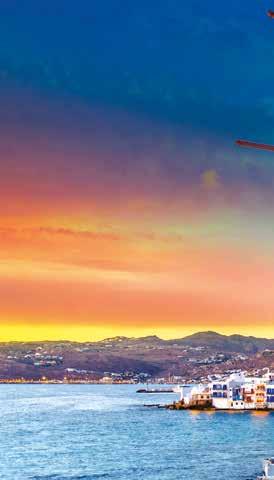
the beautiful Kardiani -a sunset you won’t stop admiring. The same goes for Ysternia, a village resembling a marble artefact, where you can enjoy a cool cocktail while the sun paints the whole creation with fire like a giant fireball. But also, in the picturesque settlement of Volakas, among the giant boulders that capture the imagination with their sheer size, while the world appears immersed in an otherworldly light. And if you prefer the


beaches, there is no shortage of them on Tinos as well. Agios Romanos, with its endless sandy beach and shallow blue waters, Kionia, next to the ancient temple of Poseidon and Amphitrite, and the pebble beach of Agios Markos, with its calm waters, which you can reach by taking the stairs down from the homonymous white chapel, are all ideal places to feel like you are swimming in the sunset.
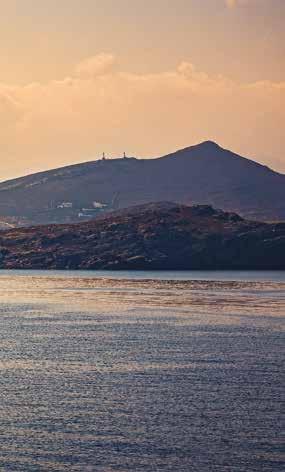
Korakas
Lighthouse in Paros.
The cosmopolitan island that never seems to sleep is guaranteed to offer unique thrills. As well as unique sunsets. The much-photographed Little Venice, with its whitewashed houses caressed by the sea and colourful balconies overlooking the infinite blue, becomes even more enchanting as the sun sinks into the sea. It is no coincidence that it turns out to be the most popular place on the island at this very time -though not only. For more peace and quiet, head up to the church of Paraportiani, perhaps the best spot for a postcard photo, but also to get your romantic sparks flying for good. And if you want to escape the cinematic Chora, another world opens up on the beach of Kapari. Here, where fragrant capers abound and aromatic plants sprout from the rocks beside the crystal clear waters, you can enjoy the sunset away from the crowds.
Paros may be inextricably linked with its beautiful beaches, hospitable ports and romantic villages such as Naoussa and Parikia, nightlife and good food; but there is also an area of special flora, rich in biodiversity and natural beauty, which has been declared an environmental and cultural park and is well worth a visit. This is the peninsula of Ai Giannis, where nature lovers can follow the marked trails and reach the Korakas lighthouse. Situated near the picturesque harbour of Naoussa, this emblematic stone-built lighthouse has stood proud and imposing since 1881. Since then, it has offered unparalleled views of the rest of the Cyclades and the most spectacular sunsets. An equally fascinating alternative is to follow the enthusiastic crowds as they walk through the picturesque alleys of Parikia, with its whitewashed villas and blooming bougainvilleas, to Frangokastello, the highest point in

the city, to watch the sun sink majestically into the sea from afar.
It is neither as big nor as cosmopolitan as other Cycladic islands. But Ios -or Nios as the locals call it- has its own special natural beauty, its famous beaches and its own way of entertaining the summer nightlife. And it can certainly boast
The traditional windmills of Ios as the sun sets.

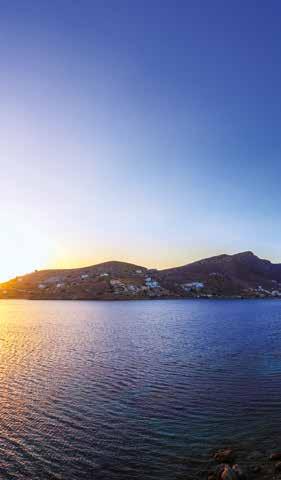
Sunset from the church of Agia Irini, which dominates the entrance to the harbour, at Gialos of Ios.
its own very special sunset, which for many is equal to, if not more beautiful than, those enjoyed in Plaka on Milos or Oia on Santorini. All you have to do is climb to the top of the highest hill in Chora, where Panagia Gremiotissa (Virgin Mary of the Cliff) stands, all white with its blue dome and the ornate bell tower that dominates the landscape. The Byzantine church, built in 1797, owes its name to its location, as it hangs practically on the edge of the cliff. Apart from the endless views of the harbour (Gialos), the lighthouse and beyond the horizon, it is the ideal place to watch the magnificent sunset with the most spectacular shades at the sky and the sea. And if, according to local legend, there are 365 churches on Ios (one for each day of the year), you only have to climb a little higher to find three more picturesque churches (Agios Eleftherios, Agios Georgios and Agios Nikolaos) and admire the sunset in an explosion of orange and red. Or head back down to Agia Irini, the bright white church perched on the rock at the entrance to the harbour, opposite the lighthouse. Or at Agioi Anargyroi, the small church, beautiful in its simplicity, on the rocks of the lowest hill of the Chora -from here, too, the sunset is a unique experience. But let’s not forget the beaches, and first of all Mylopotas. With its golden sandy beach surrounded by rocks and crystal-clear water in all shades of blue, it is the ideal destination not only for those who love the sea, but also for those who enjoy a romantic sunset. The same goes for Koumbara beach, with its fine pebbles, and the secluded Lorentzena, with its rocks and wild beauty, where the sun sets majestically behind the island of neighbouring Sikinos.
What if its legendary caldera is the most evocative view, capturing the imagination with the myth of ancient Atlantis. What if the unique beaches, with their clear waters and incredible colours, invite -and challenge- the visitors? What if

Right: The traditional settlement of Oia in Santorini is the ultimate destination for the most romantic sunset.
Below: Amazing view from Fyra, in Santorini.

its long history unfolds in a unique way in its outstanding archaeological sites. One thing always comes to mind: Santorini equals sunset! Oia is undoubtedly the most famous area in the world to admire it from. What anticipation and what joy to see the sun set in the endless blue of the Aegean Sea! The applause of the people who climb the rocks and the white in-caves is always festive. But the sunset in Fira and Imerovigli also has its own “fans”. The Akrotiri lighthouse,


κανείς
built in 1892 by the French Lighthouse Company and now accessible by road from the village of Akrotiri, offers a unique view of the endless blue and a sky that blazes at sunset. But if you want to experience first-hand what the… Moon looks like, it is worth visiting Vlychada, in the south of the island, where imposing rocks spread like a huge wall on a vast beach with deep waters -an eerie landscape that becomes magical when the sun sets.




Water sports combine fun and exercise in the most enjoyable and cool way, beating the summer heat. What few people know is that water sports have a beneficial effect on chronic upper respiratory diseases and that children and teenagers who spend their summers in water sports build a very strong immune system from an early age.
Personally, I got involved in water sports because I was looking for answers to the question: “Why has the morbidity of respiratory diseases increased so much despite medical advances?”. Otolaryngology in particular has seen an increase in patients with allergic rhinitis, sinusitis, polyps, obstructive apnoea and malignancies of the mouth, throat and larynx. The somatisation of stress has also increased, with symptoms such as dizziness, headaches, tinnitus, swallowing difficulties and instability becoming more common. Of course, despite the evolution of diagnosis and therapy, whether pharmaceutical or surgical with the new endoscopic techniques, what Hippocrates said thousands of years ago still holds true: the body is largely self-healing.

Any age is suitable to learn water skiing or windsurfing, so eight years ago I was sweetly tempted to fulfil a childhood dream and learn water skiing and windsurfing. Fascinated by the aura of the air of Paros, I decided to overcome my fears with the help of experienced instructors. Windsurfing and water skiing are two sports that increase adrenaline and excitement, boosting levels of endorphins, which act as natural antidepressants in the brain and instantly change your mood. At the same time, while in the water, we perform the most natural nasal cleansing, which cures chronic upper respiratory tract problems or helps to maintain them at a stable level, without complications and severe symptoms.
Anatoli Pataridou DENT Head & Neck Surgeon - Kids & Adults
Scientific Associate of HYGEIA - MITERA Hospital www.pataridou.gr
Combined Intrarenal Surgery for complete elimination of kidney stones WHEN CONVENTIONAL TREATMENTS FAIL FOR THE VERY LARGE, COMPLEX CORAL STONES THAT OCCUPY THE ENTIRE INTERIOR OF THE KIDNEY, THE SOLUTION COMES FROM ECIRS.
Τι είναι η ECIRS (Endoscopic Combined Intra Renal Surgery)
Combined Intrarenal Surgery is the simultaneous approach to the stone by ureteroscopy and percutaneous endoscopy.
The first mini camera is inserted directly into the inside of the kidney through a five millimetre hole in the skin. At the same time, the second one approaches the kidney endoscopically by ascending the ureter. This allows us to access every part of the kidney with flexible, thin endoscopes without disturbing the delicate interior of the kidney. The use of fine tools is sufficient as the large stone load is removed from the kidney by two simultaneous routes. In other words, every available method is combined in the same session to ensure that the problem is solved in the best possible way.
• Ability to utilise the abundant power of the laser in every part of the stone
• Complete elimination of lithiasis from the kidney and real relief from the problem
• Minimum possible “battering” due to the hole in the kidney
• No bleeding and no need for transfusion
• Reduced risk of infection
• Pulverisation of the stone regardless of size.
• Immediate recovery and return to daily activities (next day) without drainage tubes and stitches as with previous procedures
The world innovation of the ECIRS procedure is the complete supine position of the patient during the procedure. This patient position is the only one that supports the urologist’s comprehensive approach to upper urinary tract pathology. This modified technique eliminates the risk of thromboembolic events and joint stress. It is also the only one suitable for patients with increased body weight.

The ECIRS technique is also applicable to paediatric urolithiasis. In cases where we have formative kidney anomalies or a strong lithogenic tendency, it is necessary to protect the children’s kidneys. The combination of thin tools and a powerful Laser minimises trauma and ensures perfect stone removal.
Nikos Bafaloukas Director of the 4th Urology Clinic, Prostate & Nephrolithiasis Laser surgery at IASO www.ourologia.eu

, a leading fertility clinic in Athens, offers a comprehensive range of services to support individuals and couples on their path to parenthood. Led by Dr. Georgios Christopoulos MRCOG, a specialist in Assisted Conception and Fertility Care, ArkIVF is part of Hygeia IVF Embryogenesis, the most advanced reproductive medicine clinic in Athens. The clinic is known for its cutting-edge technology and compassionate care, providing personalized fertility treatments tailored to each patient.
ArkIVF specializes in In Vitro Fertilization (IVF) and Intracytoplasmic Sperm Injection (ICSI), two effective assisted reproductive technologies. IVF involves fertilizing an egg outside the body, while ICSI addresses male infertility issues. The clinic also offers egg and sperm donation programs with rigorous screening processes to ensure high-quality genetic material. Preimplantation Genetic Testing (PGT) is another key service at ArkIVF. PGT screens embryos for genetic abnormalities before implantation, reducing the risk of hereditary conditions and improving IVF success rates. The clinic also provides fertility preservation services, including egg and sperm freezing, for those who wish to delay parenthood due to personal or medical reasons.

ArkIVF extends its exceptional fertility care to international patients through a cross-border fertility treatment program. This begins with remote consultations via video calls, allowing patients to discuss their medical history and treatment options with specialists. Upon arrival in Athens, patients benefit from state-of-the-art facilities and a skilled medical team, with comprehensive support including airport transfers and accommodation arrangements.
ArkIVF helps patients navigate the legal and ethical complexities of fertility treatment in Greece. The clinic ensures all procedures comply with Greek laws and regulations, offering multilingual counselling services to make international patients feel comfortable. In summary, ArkIVF in Athens combines advanced medical treatments with compassionate, holistic support, making it a top choice for individuals and couples seeking fertility solutions locally and internationally.
Dr. George Christopoulos Ark IVF / ΟbstetricianGynecologist Sub – Fertility Specialist

Most people who have torn their anterior cruciate ligament (ACL) describe hearing a “pop” or “crack” and then feeling their leg “snap” or “stick”. Deep pain in the knee and swelling are the first signs, and depending on the damage, the knee joint may become limited in movement and unstable. The diagnosis is mainly based on the clinical picture, which shows how stable and functional the knee is. MRI plays an important role in detecting other knee injuries (meniscus tears, cartilage damage, etc.). An ACL rupture can be complete or partial.
WHEN IS SURGERY
In the case of ACL rupture, surgical treatment is usually a one-way street, depending on the patient’s age, gender, occupation and sport. The doctor will use a graft (from the patient) to replace the ligament to make the knee stable and functional again.
WHAT IS THE PERSONALIZED APPROACH TO ANTERIOR CRUCIATE LIGAMENT RUPTURE?
Modern arthroscopic surgery allows for a personalised approach to ACL rupture. If the consultant surgeon decides that surgery is needed, they will need to decide which graft to use to repair the injury. At the MINISCO Center of Orthopedics in Athens, we individualise this choice depending on age, activities, body measurements, body characteristics, anatomical characteristics from MRI, joint elasticity, the position the athlete plays (e.g. goalkeeper or centre-back, etc.), and so on. The individualised approach to ACL rupture makes sense because it is not possible for one graft to “fit” all patients. At the MINISCO Center of Orthopedics in Athens, we apply a personalised approach to ACL repair, so that each patient “wears” the graft that best suits them, in order to repair the injury and overcome this unfortunate event once and for all.

MD, PhD
Depending on the graft we choose for each patient, we work with the physiotherapists and rehabilitation instructors with whom we collaborate to develop customised post-operative rehabilitation protocols, always with the goal of a safe and rapid return to daily activities.
Dr Konstantinos S. Intzoglou, MD, PhD Director of 2nd Orthopedic Department IASO General Clinic, Doctor of Medicine, University of Athens
LAPAROSCOPIC INGUINAL HERNIA REPAIR IS ONE OF THE MOST COMMON LAPAROSCOPIC PROCEDURES.
What do we call a hernia of the abdominal wall?
A hernia is the protrusion of an abdominal organ through a vulnerable point in the abdominal wall. In simple terms, an organ of the abdominal cavity (usually simple fat or omentum, but also the intestines, bladder, etc.) finds an outlet through a defect in its wall and protrudes outwards. The projection is easily perceived by the patient as a swelling, which can be easily reduced. In cases where the contents of the hernia cannot be reduced, this is called a non-reducible hernia or incarcerated hernia and requires immediate surgery. It is the hernia located in the groin area, is the most common form of hernia and occurs much more frequently in men.
How is an inguinal hernia treated?
The only treatment is surgery. In adults, in particular, it should be operated on as soon as possible to avoid the development of some of its frequent complications (strangulation, intestinal necrosis, etc.).
What surgical treatments are available?
There are two main methods. The first is the so-called open method, in which an incision of about 10 cm is made in the area of the hernia and a mesh is placed to repair the damage to the abdominal wall.
Over the last twenty years, laparoscopic inguinal hernia repair has been developed and is now the most appropriate method of treatment.
How is an inguinal hernia repaired by laparoscopy?
Laparoscopic totally extraperitoneal (TEP) inguinal hernia repair, in which the laparoscopic instruments enter the abdominal wall rather than the abdomen, is the recommended procedure.
What are the advantages of the laparoscopic method?

● Ί mmediate post-operative pain is non-existent to minimal and significantly less than with open surgery.
● Patients are able to return to work in two days and to resume their normal activities in a week’s time.
● The so-called chronic pain is much less because the nerves in the area are identified and preserved.
● Has no absolute contraindications in bilateral inguinal hernias (hernias on both sides) and in recurrent inguinal hernias.
● Offers an excellent cosmetic result as only three small incisions of 5-10 mm are made.
Christos Stratis MD, Msc, PhD, General and Laparoscopic Surgery www.drstratis.gr
Benign Prostatic Hyperplasia is a slow, gradual enlargement of the prostate gland that can cause urinary problems and usually occurs after the age of 50.
Its symptoms are:
● Weak urine stream
● Urinary hesitancy
● Frequent urination
● Nocturia
● Interrupted urination
● Urinary urgency
● Chronic urinary retention
● Overflow incontinence
● Acute Urinary In retention
Treatment
Pharmacological treatment only slows the progression and improves quality of life, but has significant side effects on sexual health! This means a decrease in sexual desire (libido), palindromic ejaculation (partial or complete absence of it), possibly hypotension and in rare cases erectile dysfunction.
Treatment with the REZUM technique
The REZUM technique is a minimally invasive, non-surgical treatment that uses directed steam to target hyperplasia.
The advantages of the REZUM method are:
● It is painless and bloodless
● It eliminates side effects such as erectile dysfunction and incontinence

● It maintains full ejaculation
● It has excellent results
● No hospitalisation
● With simple conscious sedation
● The patient returns to his activities immediately
● It is safe
It is a method that is of great benefit to patients who cannot or do not wish to be sedated. It can be used even in patients with serious comorbidities (cardiac, respiratory).
Τhese are neurological conditions caused by increased pressure in anatomical tight spaces where nerves are located, in the wrist region for the median nerve and in the elbow region for the ulnar nerve. Causes are repetitive motions, anatomical variations, local injuries, hormone disturbances, diabetes, and rheumatological conditions.
Symptoms include numbness, and in severe cases, muscular weakness in different parts of the hand. Moreover, in cases of carpal tunnel syndrome, the symptoms usually occur during the night with numbness and frequently severe pain. In more severe cases weakness of the muscles that move the thumb occur, resulting in loss of the dexterity of the hand. In ulnar neuritis cases, the symptoms usually include numbness of the small and ring fingers with gradual muscular weakness of the hand. These conditions are usually chronic with most of the patients not perceiving the gradual nature of the symptoms and visiting a physician when the clinical condition is already advanced.
The local pressure upon the nerves results in gradual non-repairable injury of the nerve structure; therefore, immediate management is mandatory. Conservative treatment should be selected only in mild cases and includes modification of the daily repetitive motions that increase the local pressure in the nerve, medications, physical therapy, and local braces. Definitive though management is achieved only with surgical decompression of the nerves.
In carpal tunnel syndrome, decompression of the nerve is achieved, either with an open method or endoscopically. The open method involves longer incisions within the palm resulting in difficulties during manual activities immediately post-operatively. In contrast, the endoscopic method, which is achieved through a very small incision in the wrist region, allows faster, and in many times immediate return in activities, making it very popular in people that they do not want their lives to be drastically altered. In cases of ulnar neuritis, the ulnar nerve is managed in a similar fashion with local decompression, although, frequently, transposition of the nerve is essential in a different region from its native, when it cannot be maintained within this during elbow motions. The management of compressive neuropathies should be individualized and fashioned to the demands of modern life. The modern surgical techniques are in line with this rationale, since they allow faster recovery to activities with minimal surgical intervention.

Nikolaos P. Zagoreos MD, MSc, Orthopaedic Surgeon, Director of Orthopaedic Upper Extremity Surgery and Reconstructive Microsurgery, Metropolitan Hospital
O
The thyroid gland, its role in the body and its pathologies
THE THYROID IS A SMALL BUT MAJOR ENDOCRINE GLAND FOR THE BODY. IT PRODUCES THYROID HORMONES, WHICH PLAY AN IMPORTANT ROLE IN REGULATING CELL METABOLISM. THIS MEANS THAT THYROID HORMONES AFFECT VIRTUALLY EVERY ORGANIC SYSTEM IN THE BODY.
Disorders of thyroid function are in themselves a large category of thyroid conditions. These conditions include hypothyroidism (reduced production of thyroid hormones) and hyperthyroidism (increased production of thyroid hormones).
Hypothyroidism is accompanied by easy fatigue, constipation, muscle weakness, depression, cold intolerance, dry skin, decreased libido, menstrual disorders (in women), facial swelling, inability to concentrate, memory disorders, etc. In children, it can cause developmental delays and intellectual disabilities.
Hyperthyroidism may be manifested by weight loss, tachycardia/arrhythmia/ palpitations, nervousness, anxiety, irritability, sweating, etc. In rare cases, it can even be life-threatening (thyrotoxic crisis).
Other common thyroid conditions include thyroid nodules. Although most are benign, in 5-8% of cases they can mask thyroid cancer.
Thyroid cancer is the most common cancer of the endocrine glands. Although it usually has a good prognosis, it should be treated with the correct diagnostic and therapeutic methodology to ensure that patients are cured to the maximum extent possible.
Thyroiditis is an inflammation of the thyroid gland. The most common is Hashimoto’s thyroiditis, often manifested by hypothyroidism.
Goitre is characterised by an increase in the size of the thyroid gland, with or without impaired thyroid function. It can have various causes (nodules, thyroiditis, hyperthyroidism, etc.). Surgery is often required.

A patient with a thyroid condition should undergo proper diagnostic evaluation and treatment. The specialist thyroid surgeon plays a central role in the management of these patients, deciding when surgery is needed (and what kind of surgery) and performing it with maximum safety and thoroughness. This provides an immediate and permanent solution to the patient’s problem. The surgeon’s specialisation and experience are decisive parameters for the optimal treatment of the patient according to modern international standards.
George Sakorafas Thyroid and Parathyroid Surgeon, Assistant Professor of Surgery at the University of Athens, Coordinating Director of the Agios Savvas Surgical Clinic. Hospitals: Eugenideio - Medical Center Psyhiko Clinic - Mitera - Hygeia http://www.gsakorafas.gr

You’re exactly at the place you’ve been thinking about all year -your favourite Cycladic island, the beach you’ve been dreaming of. The mind is at peace as the gaze counts the shades of blue that stretch out before you and the sea seems to call you to dive in. You stand up and walk towards the water. Happiness comes in 3, 2, 1...


